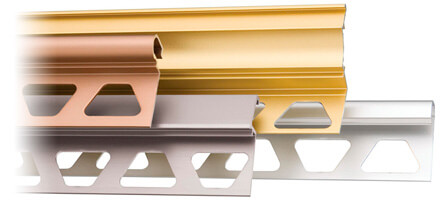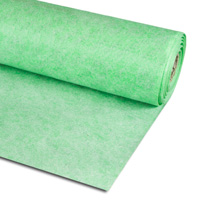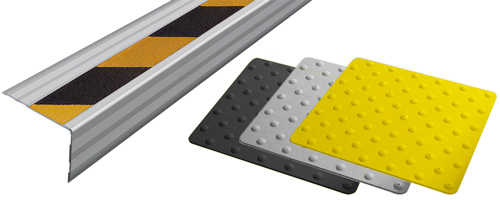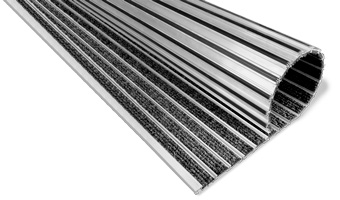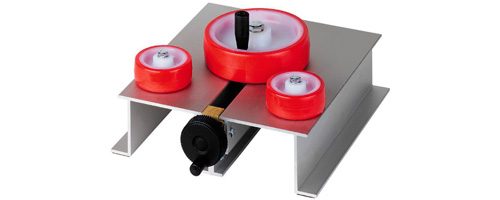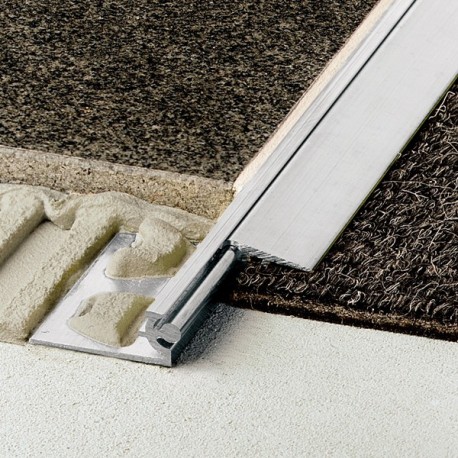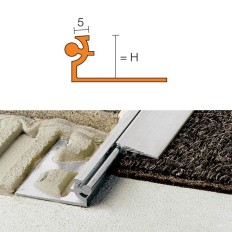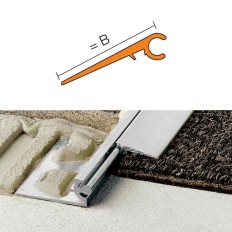Transition profile with an adjustable arm for creating stepless transitions between floor coverings of different heights; e.g. the transition between tile and carpet. In addition, the profile effectively protects the edges of adjacent coverings.
The movable transition arm, via a ball-andsocket joint, allows the profile to adjust to the height of the adjacent covering. Thus the occurrence of trip edges between coverings of different heights is eliminated.
RENO-V is also suitable for heavy-duty applications (e.g. entrances to garages or loading docks). In such cases, the adjustable arm is back-filled with mortar.

Material
The ramp profile RENO-V is available in the following materials:
- A = aluminium
- AE = anodised aluminium
Installation
- Select RENO-V according to tile thickness.
- Using a notched trowel, apply dry-set adhesive to the area where profile is to be placed.
- Press the perforated anchoring leg of Schlüter RENO-V into the adhesive and align.
- Trowel additional dry-set adhesive over the perforated anchoring leg to ensure full coverage and support of the tile edges.
- Solidly embed the tiles so that the tiled surface is flush with the top of the profile; the profile should not be higher than the tiled surface, but rather up to approx. 1 mm lower.
- The tile is set to the lateral joint spacer, which ensures a uniform joint of 1.5 mm.
- Fill the joint between the profile and the tile completely with grout. Place the adjustable arm onto the adjacent covering and, if applicable, adhere with silicone or similar. For areas exposed to heavy loads, back-fill the adjustable arm with mortar.
Maintenance
The inclined profile RENO-V requires no special maintenance. Damage (i.e. from abrasion) to the anodised layer can be repaired with a coat of lacquer.

